A targeted sequencing extension for transcript genotyping in single-cell transcriptomics
- PMID: 37696578
- PMCID: PMC10494938
- DOI: 10.26508/lsa.202301971
A targeted sequencing extension for transcript genotyping in single-cell transcriptomics
Abstract
As no existing methods within the single-cell RNA sequencing repertoire combine genotyping of specific genomic loci with high throughput, we evaluated a straightforward, targeted sequencing approach as an extension to high-throughput droplet-based single-cell RNA sequencing. Overlaying standard gene expression data with transcript level genotype information provides a strategy to study the impact of genetic variants. Here, we describe this targeted sequencing extension, explain how to process the data and evaluate how technical parameters such as amount of input cDNA, number of amplification rounds, and sequencing depth influence the number of transcripts detected. Finally, we demonstrate how targeted sequencing can be used in two contexts: (1) simultaneous investigation of the presence of a somatic variant and its potential impact on the transcriptome of affected cells and (2) evaluation of allele-specific expression of a germline variant in ad hoc cell subsets. Through these and other comparable applications, our targeted sequencing extension has the potential to improve our understanding of functional effects caused by genetic variation.
© 2023 Van Horebeek et al.
Conflict of interest statement
The authors declare that they have no conflict of interest.
Figures



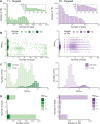
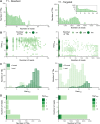

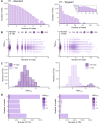
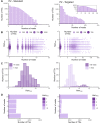
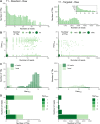
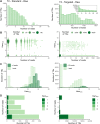


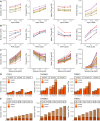






Similar articles
-
Exploring the transcriptome space of a recombinant BHK cell line through next generation sequencing.Biotechnol Bioeng. 2014 Apr;111(4):770-81. doi: 10.1002/bit.25135. Epub 2013 Nov 19. Biotechnol Bioeng. 2014. PMID: 24249083
-
Advances in Transcriptomics: Investigating Cardiovascular Disease at Unprecedented Resolution.Circ Res. 2018 Apr 27;122(9):1200-1220. doi: 10.1161/CIRCRESAHA.117.310910. Circ Res. 2018. PMID: 29700068 Free PMC article. Review.
-
Transcriptome variation in human tissues revealed by long-read sequencing.Nature. 2022 Aug;608(7922):353-359. doi: 10.1038/s41586-022-05035-y. Epub 2022 Aug 3. Nature. 2022. PMID: 35922509 Free PMC article.
-
Gene-based single nucleotide polymorphism discovery in bovine muscle using next-generation transcriptomic sequencing.BMC Genomics. 2013 May 7;14:307. doi: 10.1186/1471-2164-14-307. BMC Genomics. 2013. PMID: 23651547 Free PMC article.
-
Opportunities and tradeoffs in single-cell transcriptomic technologies.Trends Genet. 2024 Jan;40(1):83-93. doi: 10.1016/j.tig.2023.10.003. Epub 2023 Nov 10. Trends Genet. 2024. PMID: 37953195 Review.
Cited by
-
Genomic profiling in hidradenitis suppurativa: InterOmics pipeline for DNA-RNA sequencing highlights HLA variants, keratin-associated mutations and extracellular matrix alterations as contributing factors to HS pathogenesis.PLoS One. 2025 Jun 20;20(6):e0326458. doi: 10.1371/journal.pone.0326458. eCollection 2025. PLoS One. 2025. PMID: 40540520 Free PMC article.
-
Splicing the Difference: Harnessing the Complexity of the Transcriptome in Hematopoiesis.Exp Hematol. 2024 Dec;140:104655. doi: 10.1016/j.exphem.2024.104655. Epub 2024 Oct 10. Exp Hematol. 2024. PMID: 39393608 Review.
References
-
- Cardamone G, Paraboschi EM, Soldà G, Cantoni C, Supino D, Piccio L, Duga S, Asselta R (2019) Not only cancer: The long non-coding RNA MALAT1 affects the repertoire of alternatively spliced transcripts and circular RNAs in multiple sclerosis. Hum Mol Genet 28: 1414–1428. 10.1093/hmg/ddy438 - DOI - PubMed
Publication types
MeSH terms
LinkOut - more resources
Full Text Sources
Molecular Biology Databases
Research Materials
